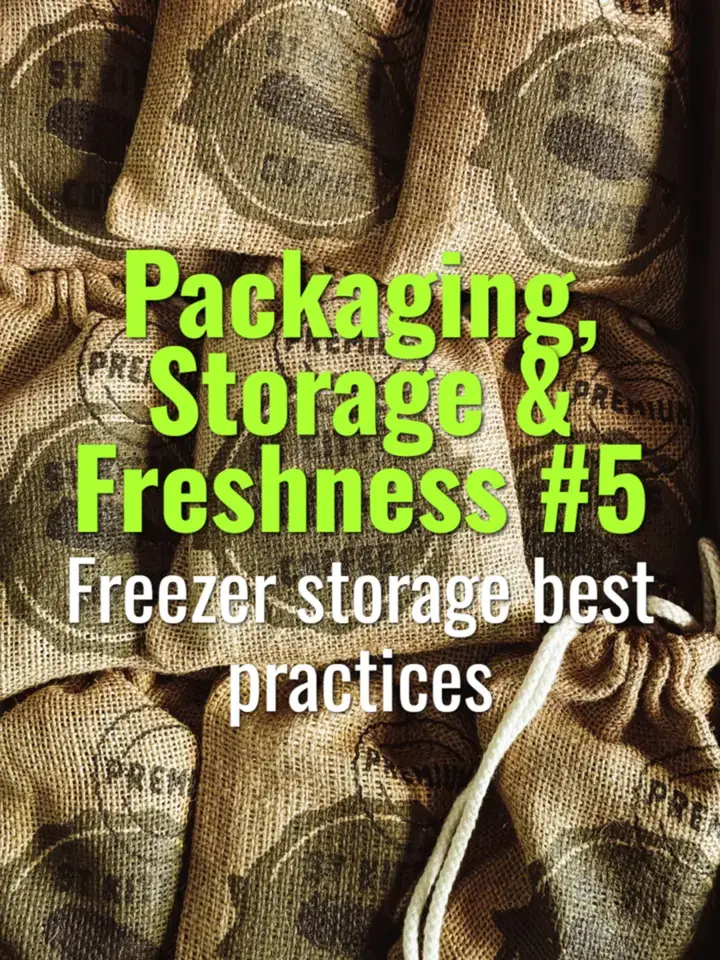Freezer storage best practices
How to properly freeze coffee to extend freshness, avoid moisture damage, and maintain flavor integrity.
- Coffee Basics Nerds
- 1 min read
Article 5 of 12 in Packaging, Storage & Freshness/

Why Freeze Coffee?
- Freezing slows oxidation and staling, preserving volatile aromatics.
- Extends usability of coffee beyond typical room-temperature shelf life.
- Useful for both roasters (bulk storage) and consumers (long-term use).
Key Principles
- Airtight Packaging: Oxygen exposure still causes staling, even in the freezer.
- Moisture Control: Condensation during freezing/thawing can damage beans.
- Portioning: Freeze in small amounts to avoid repeated thaw cycles.
Best Practices
- Vacuum Seal: Ideal for long-term storage (months+).
- One-Way Valve Bags: Acceptable for short-to-medium term.
- Double-Bagging: Adds extra moisture and odor protection.
- Temperature Stability: Keep at consistent freezer temp (avoid door compartments).
Usage Tips
- Remove only what you need; let beans thaw in sealed bag to prevent condensation.
- Grind from frozen is possible (and sometimes preferred for consistency in espresso).
- Avoid refreezing once thawed—moisture and flavor degradation accelerate.
Shelf Life
- Properly frozen whole beans: up to 6–12 months without major loss.
- Ground coffee: not recommended, stales rapidly even when frozen.
Summary
Freezer storage, when done with airtight, portioned, moisture-proof packaging, can significantly extend coffee freshness. The key is preventing oxygen and condensation, ensuring beans retain their full flavor until brewing.